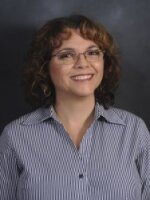The University of West Florida Archaeology Institute is leading a new project to find Fort Kirkland, a site once located north of Crestview in Okaloosa County in the early-mid 1800s.
Fort Kirkland is a place associated with the Second Creek War in 1836-1837 and the Second Seminole War, which occurred from 1835-1842.
The archaeological study aimed at locating the fort is made possible by $250,000 in state funding secured last year by District 4 Representative Patt Maney.
“Rep. Maney, who is a resident of Okaloosa County, has deep interest in knowing something about this place,” said Dr. Ramie Gougeon, acting director of the Archaeology Institute. “Because, as he's conveyed to me, he thinks this tells an important story about the region that the residents of Okaloosa County might not know about.”
Rep. Maney was unavailable due to the Florida Legislative Session, but his appropriations request cited the interest of local Okaloosa County families who have been able to trace their lineage back to soldiers who occupied the fort.
The funds will be used to research the historical background, survey the land where the fort was located, and create a historical landmark in honor of those families.
According to Dr. Gougeon, UWF researchers have been digging into the historical records since last fall, looking for more information about the fort.
“Some of the scant documents that our team has uncovered do point to Caleb Kirkland being involved in the local militia,” Gougeon stated. “So the chances are really strong that this Caleb Kirkland and his family are related to this place, Fort Kirkland. The time is right, his involvement is correct for the time period and the story that we've heard about so far.”
However, during this period in American history, there was a lot of turmoil.
“We're talking about the second Seminole War and the second Creek War,” reiterated Nicole Grinnan, assistant director of the Archaeology Institute. “It was right after Spain transferred ownership of Florida to what is now the United States and more Americans were starting to come into this area. So there was a lot happening.”
According to Grinnan, one of the issues with finding Fort Kirkland is that it existed during this period of upheaval, in a remote area, with limited documentation.
“And in this part of Florida, west of the Suwanee River, there was not a lot of federal participation in the Seminole War. Mostly what we're seeing are local Militias and local people who are arming themselves, to protect their homes, to protect the land that they now have,” she said. “And so for that reason, because we don't have a lot of federal presence in this area. We don't have a lot of good records or maps, highlighting the locations of homesteads or highlighting the locations of forts.”
In terms of what they know, the area where Caleb Kirkland and his family lived during that period is about five miles north of the City of Crestview.
“They created a homestead in the area that we're talking about,” Grinnan stated. “And we know that their home — they didn't stay there for many years — the home was burned, although we don't have specific details about how that happened. We just have some newspaper records and then some other local histories talking about it.”
Another narrative is that Creek Indians captured the fort and burned it down.
“Our question now is, is this Fort Kirkland that we hear about tied to the Kirkland family and how are those two things related?” said Grinnan.
A major component of the study is to engage university faculty and provide educational opportunities for students, incorporating them at every level so they get first-hand experience.
This spring, anthropology students in Jennifer Melcher’s GIS (Geographic Information Systems) mapping class have been helping to identify search locations.
“This was a perfect project for her to fold into that class,” said Gougeon.
“She has taken some of the historical maps that we’ve uncovered and tried to project them over the sort of modern contemporary maps, aerial photographs and things like that. So taking somebody’s hand-drawn, representations of creeks and county lines and town locations and things like this and stretch them and manipulate them so they match the actual landscape.”
Students also will get training in metal detecting. This week, on Thursday, they learn how to use the equipment and get instruction on how it can be used for an archaeological survey. On Friday, the students will take what they’ve learned out in the field to see what they can find in some of the higher probability areas for the project.
Gougeon believes, when their work is done, they will uncover a compelling narrative.
“At the end of the process, we are going to have this interesting story to tell about Fort Kirkland, but be able to contextualize it in other experiences across western Florida, from both the kind of colonial early American experience but also the Native American side,” he said.


